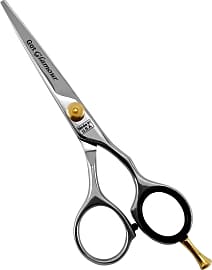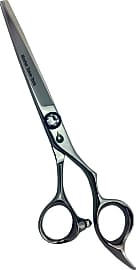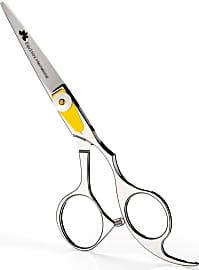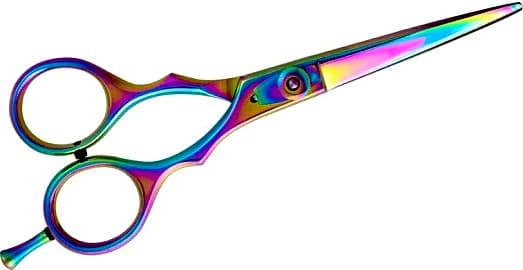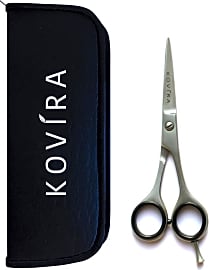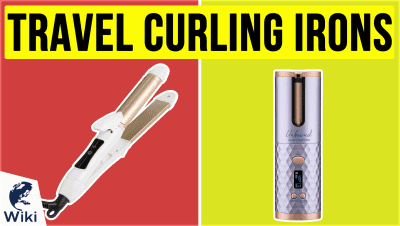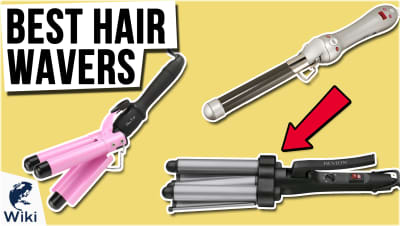The 10 Best Barber Shears

This wiki has been updated 36 times since it was first published in February of 2016. Acquiring a good pair of barber's shears doesn't necessarily take professional experience or a large bank account. Much of the decision relies on personal taste and the type of style you want to create, and, of course, the size of your hands. A long-lasting pair will be made of high-quality metal, have sharp blades to deliver clean cuts, and be ergonomically designed to minimize hand fatigue. When users buy our independently chosen editorial choices, we may earn commissions to help fund the Wiki.
Editor's Notes
July 16, 2020:
Along with a good pair of clippers, barber shears are one of the most important tools in a hair stylist's arsenal. Of course, as with most items, they vary greatly in quality. Since we understand that home users may not need scissors that can stand up to as much wear and tear as a professional hair dressers, we thought it prudent to include both premium and affordable models. We also realize the some people may want a pair that really stand out, so we made sure to include some eye-catching options, while others may prefer something a little more discreet.
Without a doubt, are of the highest-quality options on our list is the Aerolite Scissor Company Japanese Hitachi. They are made from premium ATS-314 stainless steel that is highly resistant to corrosion and retains an edge exceptionally well. Plus, they feature a special edge symmetry that is said to leave cut strands healthier than traditional convex blades. However, the lofty price of these may put them out of reach for many, so barbers looking for something a bit more affordable, but still of high quality, may want to turn to the Got Glamour Cobalt Molybdenum, Mosher Salon Tools Diamond Series, Suvorna Razeco E45, John DM360, or Cricket Shear Xpressions Hey Rosie instead. All will be more than suitable for professional use and some, like the Suvorna Razeco E45, John DM360, and Cricket Shear Xpressions Hey Rosie boast some seriously eye-catching designs.
For the home users and beauty students, or even professionals who want a quality backup pair that doesn't cost an arm and a leg, we think the ULG 6.5-inch Flat, Equinox International PL10, Kovira Professional Hair Dressing, and Utopia Care UC0042 fit the bill. Of these, the Kovira Professional Hair Dressing have the longest cutting edge and perhaps the most subtle finish, plus the addition of the case makes them a good value. However, in terms of overall quality and style, we feel the ULG 6.5-inch Flat edge them out.
April 29, 2019:
A good pair of barber shears can make all the difference when cutting hair. While they can get very pricey, these days you can also get a reasonably quality option without spending too much. In fact, we have found some very affordable models that can meet the demands of professional stylists, such as the Equinox International and John DM360. That being said, if you are willing to spend just a little bit more money, you'll realize a noticeable difference in quality. For these barbers, we recommend the Got Glamour Cobalt Molybdenum and Mosher Salon Tools Diamond Series. For home users who like to perform their own cuts, or cuts on family members and friends, or for beauty school students who are still on a very tight budget, the Barber's Choice BC-001, Kovira Razor, Tweezerman Stainless 2000, and TC Joy BUI-56 Set should be up to the task.
Special Honors
Hattori Hanzo HH8 Talon The HH8 Talon are available in six lengths ranging from five to seven inches and come in left- and right-handed models. They are made from a proprietary blend of metals that include cobalt and molybdenum alloys, have a counter-sunk tension-control screw, and are backed by a lifetime warranty. hanzo.com
Ninja Scissors Katana Built with a focus on durability, performance, and comfort, the premium Ninja Scissors Katana shouldn't disappoint any stylist. Though pricey, they are made from Hitachi ATS314 Japanese cobalt steel that boasts a Rockwell hardness rating of 62 and a beautiful satin black finish, so they are worth every penny. ninjascissors.com
Qualities To Suit Your Style
With that in mind, think about the weight, length, balance, and handle configuration of the shears.
If you ask a dozen different barbers about their favorite type of shears, don’t be shocked if you receive a dozen different responses. No shears serve as a one-stop-shop for a barber’s every need; every individual barber has a personal cutting style, and he or she should select shears to match that style.
When making your selection, you should consider two attributes above all overs: comfort and control. Think about it — if you encounter a shears-wielding barber who looks uncomfortable and unrestrained, are you going to sit down in that chair? More than likely, you’re already running as fast as you can in the opposite direction.
With that in mind, think about the weight, length, balance, and handle configuration of the shears. The blade weight and length determine your level of control, and the configuration of the shears — including the finger rest — should feel good in your hand. If you use them extensively, the wrong design can lead to tendinitis, carpal tunnel syndrome, and other painful ailments.
Some barbers prefer straight handles, though these can also lead to wrist strain. Offset handles with a slight angle provide a more natural position for your wrist, and therefore enhanced comfort. Straight or angled, the hole within the handle should be a comfortable fit for your fingers.
Naturally, you can’t overlook the blade itself, and you'll have to choose a blade with a convex design or one with a beveled edge. Made from stainless steel, convex blades are heavier and razor-sharp, making them a good option for expert barbers. Beveled-edge blades are lightweight, designed with micro serrations that make it easier for less experienced barbers to make detailed cuts with precision.
Make sure to go with shears that are compatible with your dominant hand. It may seem obvious, but it’s surprising how many left-handed barbers receive right-handed shears, along with a thoroughly unhelpful, “You’ll figure it out,” from their employer at the outset of their careers.
As mentioned above, a one-size-fits-all set of shears is simply not available. Therefore, in addition to proper clippers, professional barbers will likely need to purchase multiple shears for various hair-cutting applications, such as thinning, blending, texturizing, chunking, and notching. The design of the shears will differ, but the general process for selecting a model suited for you will remain the same.
Makeup And Maintenance
Since you use different techniques with typical hair-cutting scissors than you do with barber shears, these tools are not designed in the same way. While a hairdresser using scissors often cuts in small increments with the hair held between the fingers, a barber using shears will usually employ a shears over comb approach. This requires blades that are long enough to align with the side of the comb.
Not only is this important for performance, it helps minimize fatigue in your hand.
In terms of makeup, stainless steel is preferable, but some high-end shears are designed with additional substances to provide even greater strength. The finest blades include a blend of cobalt and titanium, which increases hardness and reduces weight. The harder the blade, the more uniform your cutting will be. Molybdenum and chromium both enhance the blade's resistance to corrosion, while manganese helps it retain its edge.
Just as you use comfort and control as a barometer for choosing your shears, these two factors are also helpful in determining whether or not your shears are working properly. Each time the tool opens and closes, it should feel extremely smooth. Not only is this important for performance, it helps minimize fatigue in your hand. You should not feel the hair as it’s being cut, nor should you hear any audible noises aside from the slide of the blades.
If you believe your blades need sharpening, bring them to a professional — but make sure to properly vet this person first. Be very cautious about who sharpens your shears, as he or she should have specialized training and equipment that can adequately sharpen high-quality blades.
Each day when you’re done using them, you should clean your shears with a damp towel or cloth, then store them in a case (a leather pouch works well). If you used them on permed or colored hair, wipe the blades down with alcohol as well. You should oil your shears at least once per week, and bring them in for professional servicing at least once per year to make sure they’re properly set and balanced.
Barber Shears Through The Ages
Just as hairstyles have evolved over centuries, the tools necessary for shaping those hairstyles have progressed over time, as well. Today, a trip to the barber shop is often a pampered experience, resulting in an expertly trimmed hairdo and a perfect shave. In the past, the process was a bit more, shall we say, antiquated.
The instruments of those days were crude — certainly nothing like the shears of today, and bearing little resemblance to a modern razor.
Records indicate that the earliest instances of barber services occurred in Ancient Egypt, where men regularly shaved their heads and faces. The instruments of those days were crude — certainly nothing like the shears of today, and bearing little resemblance to a modern razor. Tools made with sharpened flint, stone, and oyster shells were common.
During the Bronze Age in Egypt, people continued to use razors to cut hair. The first time someone used shears for this purpose is unknown, but by the time the Roman Empire rolled around, barbers were using rudimentary scissors for hair styling purposes. During the 1800s and early 1900s, hair-cutting scissors began to resemble the tools that professionals use today. Models dedicated to facial, nose, and ear hair became available during this era.
I think we can all agree that barber shears have come a long way over the years. So, in recognition of this, the next time you walk out of the barber shop with a fresh cut and an exquisitely manicured beard, spare a thought for our forebears. Back then, if a man was courting a lady and needed to look good, his scalp and face had to endure hacking, slicing, and scraping with a crude blade. He had to earn it.



